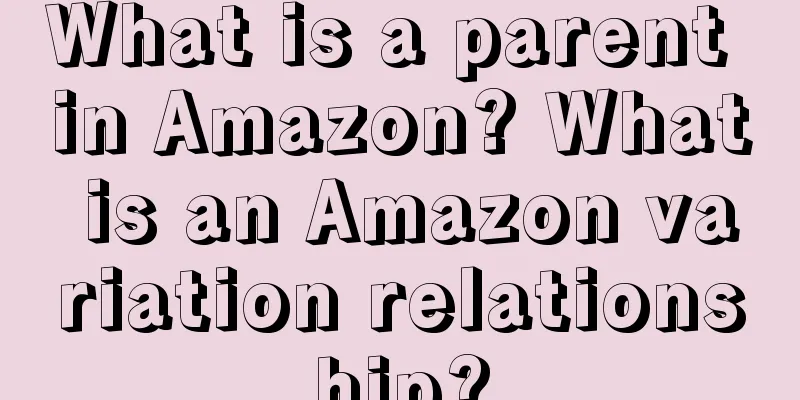What is a parent in Amazon? What is an Amazon variation relationship?

|
When opening a store on Amazon, you will inevitably encounter many professional terms as long as you deal with listings. The most common ones are parent and child, variants, and true and false. Many people do not understand these similar terms. So what is the parent? Let's introduce it in detail below. What is the parent body of Amazon? Amazon variants include parent and child, i.e. parent ASIN and child ASIN. Child is a product with variant attributes, while parent contains all child, which can be said to be a collection of products. In many cases, the parent has no sales significance and only exists as a binding node. The real and fake are proposed based on the sales status of the listing. In some cases, Amazon sellers need to create fake, unsalable listings to complete operations, such as locking in flash sales. In this case, the salable listing with real information becomes the real one, and the fake, unsalable listing becomes the fake one. What are Amazon variation relationships? A variant is a group of related products, and a clear variant relationship allows Amazon buyers to choose the appropriate product based on different variant attributes (color, size, etc.) on the listing details page. The Amazon listing variant relationship has the following three elements: Parent product: The listing displayed in the keyword search results page is the link between child products and is a non-purchaseable entity. Child product: Each product associated with a parent product is an instance entity of the parent product. Variation theme: It is the relationship between the parent product and the child product, which is used to define the difference between each associated child product. The variation theme will be different depending on the category set by the seller. For example, in the "Clothing, Accessories" product category, the variation attributes of the child products are defined and differentiated based on size, color, and quantity, while in the "Pet Products" category, the child products are defined and differentiated based on attributes such as taste, smell, and quantity. You need to understand Amazon's parent and child terms together to know their meanings. In addition, you also need to understand the meanings of other similar terms, so that you will have a comprehensive understanding of listing promotion. In fact, Amazon's platform's concept of promotion is different from that of domestic platforms. Recommended reading: How to register an Amazon brand? What are the steps? How much does Amazon Brand Registration cost? What should I pay attention to? What is the Amazon Brand Registry process and how does it work? |
<<: Do I need a deposit to open a Shopee store? How much is the deposit?
>>: Do I need a business license to open a Shopee store? What are the conditions?
Recommend
Can't Korea's Gmarket ship directly to China? What does direct shipping from Korea mean?
With the rise of e-commerce, more and more people ...
Does cross-border e-commerce not require products? How to do cross-border e-commerce without sources of goods?
With the popularization of the Internet and the de...
How to clear Amazon’s performance records? Do you need to do it yourself?
Amazon’s performance records record both the good ...
Can I get my funds back if my Amazon store is permanently closed? How can I withdraw money from my Amazon account?
Sometimes unpredictable circumstances may lead to ...
WeChat Ask a Question has a new feature: you can make money by writing answers!
WeChat has launched the "Ask a Question"...
Overcoming @一笑倾城, "Electronic Girlfriend" becomes the new top streamer on TikTok
Now, Douyin has become an app that everyone cannot...
Between the platform and the anchor, whose low-price ability is more vulnerable?
The platforms are waking up, and they want to take...
Can I buy a Shopee account? Is there any risk in buying it?
Many sellers who opened stores on Shopee have thei...
How many core keywords can I write for Amazon? How to write them?
Many friends have their own stores on Amazon. So, ...
The recent trend of Xiaohongshu in the pet industry! How to achieve conversion and dissemination?
Although the birth rate has decreased in recent ye...
The 618 preheating has begun. What new features will the e-commerce platforms have this year?
With the economic recovery, all major e-commerce p...
What is the basic idea of Wish product selection? What are the methods of Wish product selection?
In this competitive market, how to choose the righ...
Recent observations: Fancy ways to pay for knowledge
Through the author's personal experience and o...
Automotive video marketing 3.0: Creating content is also about building relationships
With the intensified competition in the automotive...
The driving force behind "junk takeout": mass replication of stores, 20 million yuan in franchise sales
In the fast-paced urban life, food delivery has be...








![After analyzing 1,000 popular articles on Xiaohongshu [June], we summarized these routines!](/upload/images/67e6f4918db4a.webp)
